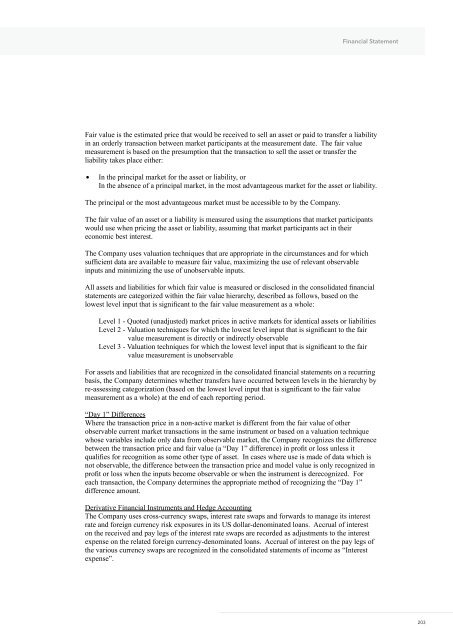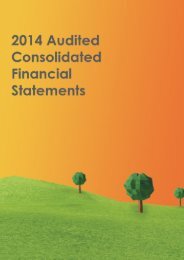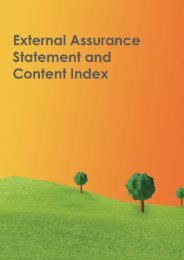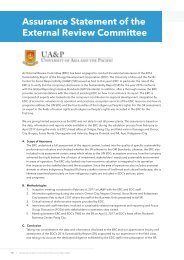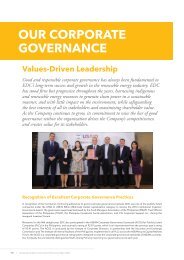EDC PR 2016 (FS section)
Create successful ePaper yourself
Turn your PDF publications into a flip-book with our unique Google optimized e-Paper software.
Financial Statement<br />
Fair value is the estimated price that would be received to sell an asset or paid to transfer a liability<br />
in an orderly transaction between market participants at the measurement date. The fair value<br />
measurement is based on the presumption that the transaction to sell the asset or transfer the<br />
liability takes place either:<br />
In the principal market for the asset or liability, or<br />
In the absence of a principal market, in the most advantageous market for the asset or liability.<br />
The principal or the most advantageous market must be accessible to by the Company.<br />
The fair value of an asset or a liability is measured using the assumptions that market participants<br />
would use when pricing the asset or liability, assuming that market participants act in their<br />
economic best interest.<br />
The Company uses valuation techniques that are appropriate in the circumstances and for which<br />
sufficient data are available to measure fair value, maximizing the use of relevant observable<br />
inputs and minimizing the use of unobservable inputs.<br />
All assets and liabilities for which fair value is measured or disclosed in the consolidated financial<br />
statements are categorized within the fair value hierarchy, described as follows, based on the<br />
lowest level input that is significant to the fair value measurement as a whole:<br />
Level 1 - Quoted (unadjusted) market prices in active markets for identical assets or liabilities<br />
Level 2 - Valuation techniques for which the lowest level input that is significant to the fair<br />
value measurement is directly or indirectly observable<br />
Level 3 - Valuation techniques for which the lowest level input that is significant to the fair<br />
value measurement is unobservable<br />
For assets and liabilities that are recognized in the consolidated financial statements on a recurring<br />
basis, the Company determines whether transfers have occurred between levels in the hierarchy by<br />
re-assessing categorization (based on the lowest level input that is significant to the fair value<br />
measurement as a whole) at the end of each reporting period.<br />
“Day 1” Differences<br />
Where the transaction price in a non-active market is different from the fair value of other<br />
observable current market transactions in the same instrument or based on a valuation technique<br />
whose variables include only data from observable market, the Company recognizes the difference<br />
between the transaction price and fair value (a “Day 1” difference) in profit or loss unless it<br />
qualifies for recognition as some other type of asset. In cases where use is made of data which is<br />
not observable, the difference between the transaction price and model value is only recognized in<br />
profit or loss when the inputs become observable or when the instrument is derecognized. For<br />
each transaction, the Company determines the appropriate method of recognizing the “Day 1”<br />
difference amount.<br />
Derivative Financial Instruments and Hedge Accounting<br />
The Company uses cross-currency swaps, interest rate swaps and forwards to manage its interest<br />
rate and foreign currency risk exposures in its US dollar-denominated loans. Accrual of interest<br />
on the received and pay legs of the interest rate swaps are recorded as adjustments to the interest<br />
expense on the related foreign currency-denominated loans. Accrual of interest on the pay legs of<br />
the various currency swaps are recognized in the consolidated statements of income as “Interest<br />
expense”.<br />
203


